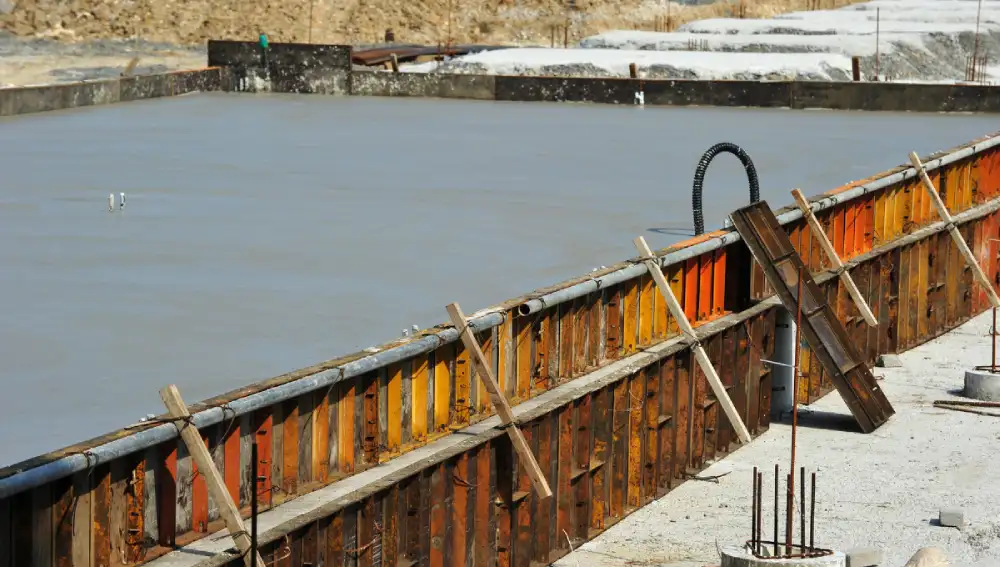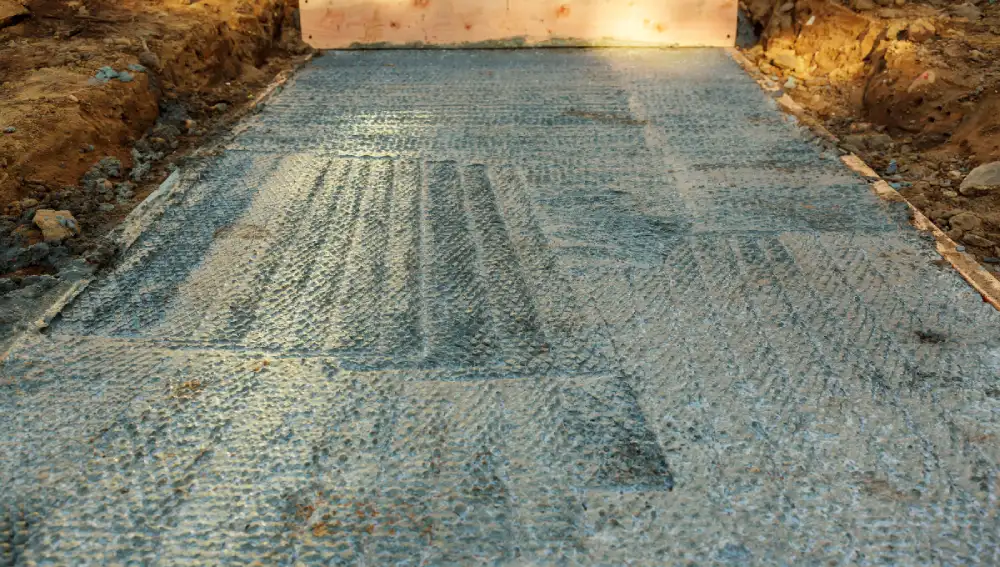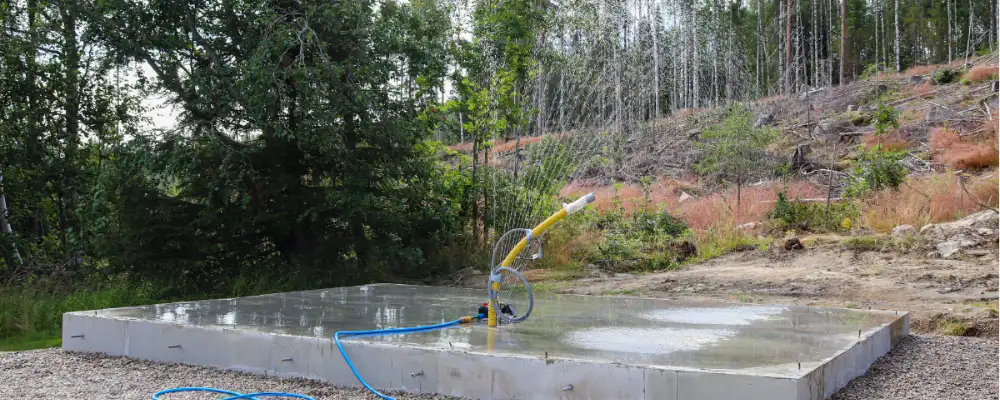Concrete is a ubiquitous material used in all types of modern construction. It is composed of admixtures, including cement, aggregates, and water, in varying proportions to obtain specific properties.
Concrete’s enhanced durability, versatility, and strength make it a preferable choice for various applications. However, without a proper curing process, the properties of concrete cannot be fully optimised.
One such widely used method is steam curing. This technique accelerates the hydration of cement, consequently improving concrete’s strength development and mechanical properties. In this blog, we’ll explain to you the process and advantages involved in the steam curing of concrete.
What is Steam Curing of Concrete?

Steam curing is a controlled process that involves curing freshly placed concrete in water vapour. This process is performed either under high-pressure steam or atmospheric pressure. When the concrete is exposed to a specific temperature and pressure, a humid environment is created. This provokes the chemical reactions essential for concrete hardening.
curing is preferred to speed up the hydration process and strength gain. It is particularly helpful in regions where the temperature is extremely low.
How Does the Steam Curing Process Work?
The steam curing process promotes the chemical reaction between cement and water, which is vital for concrete hardening. During this process, the production of calcium hydroxide and calcium silicate hydrate (C-S-H) compounds contributes to achieving the desired strength and durability.
Under normal conditions, this process will be slower and consume more time for curing. However, with steam curing, the increased temperature enhances the rate of hydration and obtains the required properties quickly.
This process includes several stages, which are mentioned in the following:
- The initial delay before the streaming process: Exposing the freshly placed concrete under high temperature for 180 minutes. It creates a good environment, promoting the hydration of concrete. It may occur for a few hours after casting. This treatment prevents thermal shock and cracking.
- Increasing temperature process: In this phase, the temperature is gradually increased to 60 degrees Celsius and maintained for an approximate period of 120 minutes. Rapid heating is strictly avoided to prevent potential cracking and thermal gradients.
- Maximum temperature phase: During this stage, the curing temperature reaches the maximum temperature of more than 70 degrees Celsius , and is maintained for around 120 minutes.
- Decreasing the temperature range: The concrete elements are set to cool down for a time period of 120 minutes until they reach the ambient conditions. This controlled cooling process prepares concrete to withstand thermal stress and minimises the risk of cracking.
Methods of Steam Curing Concrete
There are two significant methods involved in the steam curing process:
- Steam curing at atmospheric pressure
- High-pressure steam curing / Autoclaving
Steam Curing at Atmospheric Pressure
This steam curing method is performed within the temperature range of 70 to 90F per hour. However, it depends upon the size and shape of the concrete element. This is a standard and effective method, employed for the production of precast concrete components.
It is simple and budget-friendly, suitable for various applications in the construction industry. In order to achieve the determined strength, the start-to-end process should be curated with utmost control.
High-Pressure Steam Curing / Autoclaving
The autoclaving method is best for small manufactured units. It involves curing concrete at high pressure and temperature. The process is performed at a temperature range of 160 to 180 degrees Celsius and a pressure range of 80 to 170 psi.
High-pressure steam speeds up the hydration process, resulting in high early strength. This method is specifically used for autoclaved aerated concrete blocks containing excellent thermal insulation properties.
What are the Advantages of Steam Curing of Concrete

Steam curing concrete offers numerous advantages over traditional curing methods, which are uncovered below:
Early Age Strength
Steam curing is known for its enhanced early-age strength. It is crucial for construction projects with strict deadlines. This strength enhancement significantly accelerates the production, installation, and transportation of concrete elements.
Improved Durability
Steam curing of concrete promotes the hydration process, resulting in long-term durability. The quickened curing process develops a dense microstructure It helps concrete to resist chemical and weather attacks.
Rapid Strength Gain
One of the significant benefits of the steam curing method is a quicker strength gain. This is crucial for quicker removal of formworks and enhances the overall productivity of precast components.
Utmost Control Over Curing Conditions
With better control over steam environments, the crucial factors like humidity and temperature of the process are carefully curated. It ensures uniform curing and prevents the impacts caused by uneven curing.
Applications of Steam Curing Concrete
The high early strength and accelerated curing process of steam curing make it suitable for various applications, such as:
- Prestressed Concrete: Prestressed concrete elements, which endure high tensile stress, significantly benefit from steam curing by gaining early strength. It is vital to apply prestress and handle the products efficiently.
- Bridge Construction: Bridge construction is more critical than other projects, which requires early strength and durability. Rather than a rapid hydration process, steam curing helps produce and install the segments quickly.
- Autoclaved Aerated Concrete (AAC): As mentioned earlier, the autoclaving method helps produce AAC blocks and panels. They are lightweight and widely used in modern construction projects. AAC blocks offer excellent thermal insulation that can withstand cracks.
- Precast Concrete Production: The steam curing method efficiently supports the production process of precast concrete elements, like beams, pipes, slabs, and columns. Its rapid strength gain property allows for quick mold turnover.
In a Word
Steam curing is a reliable and cost-effective technique that enhances the overall curing process. This method not only helps achieve rapid strength but also promotes durability and versatility. By carefully controlling the temperature and humidity range, the technique provides uniform curing throughout the process. Based on the application, the inherent properties are adjusted with enhanced energy efficiency and quality.
Steam curing of concrete is a commonly used technique in modern construction projects. They help improve durability, energy efficiency, rapid strength gain, and reduce shrinkage on the walls.
The steam curing process is performed under four different phases, such as
* Pre-streaming
* Heating
* Constant temperature, and
* Cooling
Steam curing is particularly beneficial for construction in cold regions, where the air curing is very slow. It fastens the hydration process of concrete and accelerates the strength gain.

